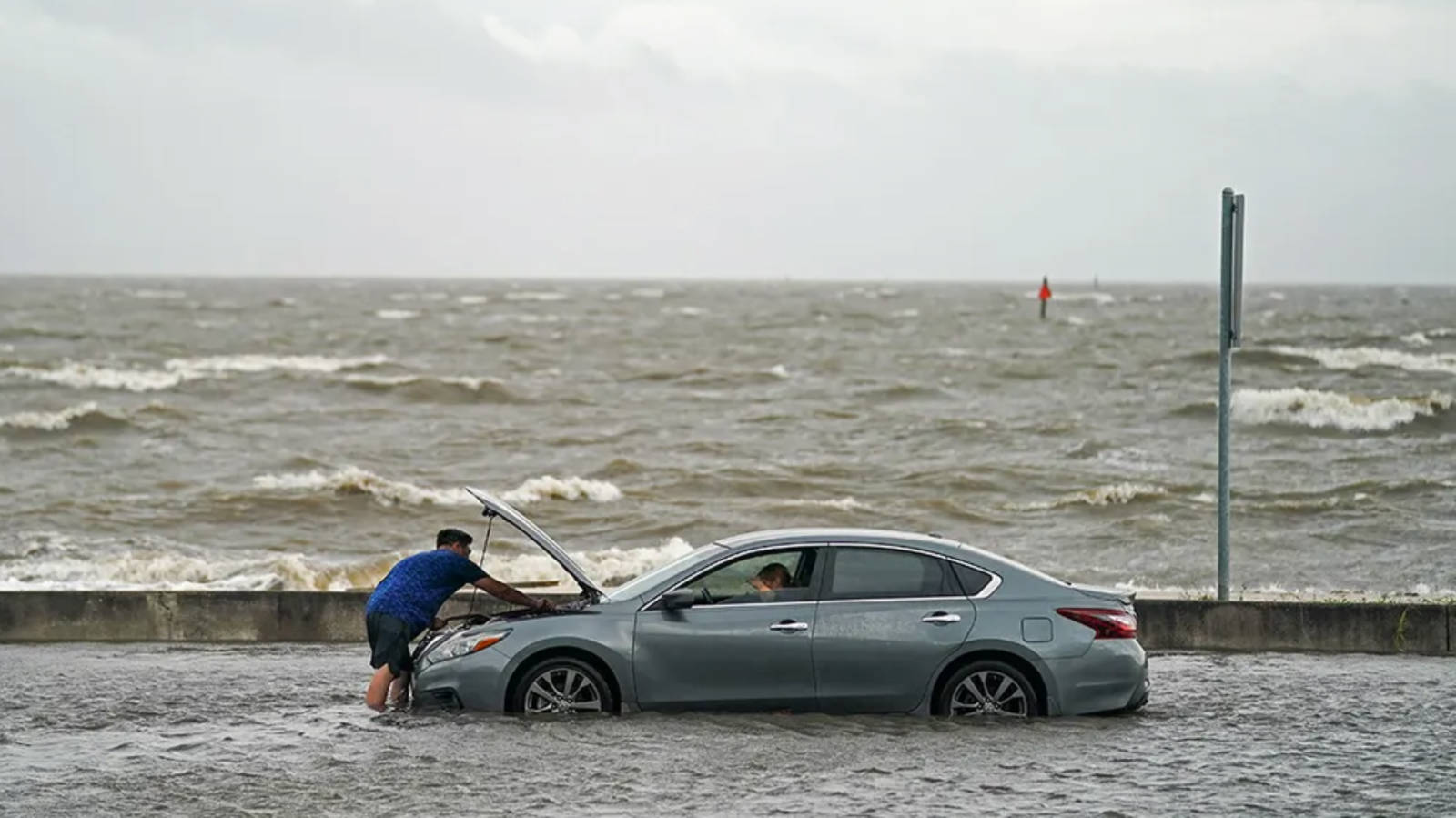Car Damaged By The Flood? Here’s How To Deal With It

Floods can be devastating events, leaving a path of destruction that often includes our cars. Floodwater wreaks havoc on a vehicle’s electrical system, engine, interior, and more. If your car has been caught in a flood, don’t panic. Here’s a comprehensive guide to help you deal with the aftermath, step-by-step:
Damages Caused By Floods On A Car
Floodwater can cause a variety of problems in your car, including:
- Electrical System Damage: Water can damage or short-circuit electrical components, leading to malfunctions in everything from the lights and power windows to the engine control unit.
- Engine Damage: Floodwater can enter the engine through the air intake or exhaust, causing internal corrosion and potentially seizing the engine.
- Interior Damage: Water can damage carpets, upholstery, and other interior components, leading to mould growth and a musty odour.
- Rust: Floodwater can accelerate rust formation on metal parts, weakening the car’s structure.
Initial Steps In Recovering A Flood Damaged Car
Safety First:
Before approaching your flooded car, ensure the floodwaters have receded completely. Avoid wading through floodwater due to potential electrical hazards.
Document the Damage:
Take pictures and videos of the flood damage to your car. This will be helpful when filing an insurance claim.
Move the Car (if possible):
If the floodwaters have receded and it’s safe to do so, move your car to a dry and safe location. Avoid starting the engine at all costs.
Disconnect the Battery:
To prevent electrical shorts, disconnect the car’s battery by loosening and taking off the negative terminal connector first.
Call Your Insurance Company:
Contact your insurance company as soon as possible to report the damage and inquire about the claim process.
Inspecting Damage
Once the car is in a safe location, you can begin to inspect the damage. Here’s what to look for:

Interior Inspection:
- Check for water stains, mould growth, and a musty odour.
- Lift floor mats and carpets to inspect for hidden water damage under the seats and throughout the cabin.
- Look for signs of water damage on the dashboard, door panels, and headliner.
- Check for any electrical components that might be visibly damaged or corroded.
Exterior Inspection:
- Look for signs of water damage on the body, doors, windows, and trunk.
- Check for rust formation around the body panels, particularly at the bottom of doors, fenders, and undercarriage.
- Look for watermarks on headlights, taillights, and turn signals.
Electrical System Inspection:
- Do not attempt to start the engine.
- Open the bonnet and look for signs of water intrusion, such as a water line on the engine block or air intake components.
- Look for any loose or disconnected electrical wires or components.
Professional Vehicle Inspection
Despite completing these checks, you might still be unsure of the car. We recommend getting a professional inspection of the car done. Get a complete inspection of your vehicle from DubiCars. Our partner AutoHub evaluates the car with over 240 checkpoints and provides a comprehensive report on the condition of the car.
Drying The Car & Expose It To Sunlight
- Open all the doors and windows: Allow for maximum ventilation and air circulation to promote drying.
- Remove floor mats and carpets: Let them dry completely in a well-ventilated area, preferably in direct sunlight.
- Vacuum and clean the interior: Remove any dirt, debris, and mud left behind by the floodwater.
- For extensive flood damage, consider professional cleaning and deodorization services to remove lingering moisture, mould, and odour from the interior.
Replacing Fluids and Filters
Floodwater can contaminate engine oil, transmission fluid, differential fluid, and brake fluid. It’s crucial to replace all fluids with fresh ones to prevent further damage to the engine, transmission, and braking system.
Floodwater can also clog air filters. Replace the air filter with a new one to ensure clean air enters the engine.
Flood Damaged Car Insurance
Review your policy details carefully. This includes coverage limits, deductibles (your upfront payment), and any exclusions for specific flood events. After a flood, prioritise safety, document the damage, and file a claim with your insurance company. They’ll assess the damage and either repair your car or declare it a total loss.
Consider comprehensive insurance for peace of mind. Regularly review your policy to ensure it reflects your current needs. Some insurers even offer additional flood-specific coverage as an add-on. By being prepared, you can navigate a flood situation with more confidence.
Selling Or Keeping The Flood-Damaged Car

Selling:
If your car is declared a total loss, you will receive a cash settlement from the insurance company. You can then choose to sell the car for salvage or scrap. Salvage yards will typically buy flood-damaged cars for parts, while scrap yards will buy the car by weight for the value of its metal components.
Keeping:
If the damage is repairable and the car holds sentimental value, you may choose to keep it after the repairs are completed. However, be aware of potential long-term issues:
- Lingering Electrical Problems: Flood damage can cause hidden electrical problems that may surface later, leading to malfunctions and repairs.
- Rust Issues: Floodwater exposure accelerates rust formation, which can weaken the car’s body structure and compromise its safety over time.
Other Important Pointers
- Do not start the engine. This can cause significant internal damage if water has entered the engine.
- Consult a mechanic for a professional assessment of the damage and repair options.
- Beware of hidden damage as flood damage can be difficult to detect completely, and hidden problems might surface later.
Dealing with a flood-damaged car can be overwhelming, but following these steps will equip you with the knowledge to navigate the process effectively. Remember to prioritise safety, document everything, and work closely with your insurance company to make informed decisions about your car’s future.
Find used cars for sale in the UAE and new cars for sale in the UAE.
Subscribe to DubiCars’ WhatsApp Channel for the latest automotive news, guides, polls, and informative infographics.
Also Read:
- Abandoned Cars In The UAE: Top Things To Know
- Guide To Automotive Terms — Car Segments
- How To Get The Best Price For My Used Car?








